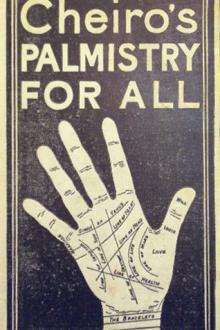The Diary - Samuel Pepys (red white and royal blue hardcover txt) 📗

- Author: Samuel Pepys
Book online «The Diary - Samuel Pepys (red white and royal blue hardcover txt) 📗». Author Samuel Pepys
The point laces of Genoa, which were so much prized in the seventeenth century, were all the work of the pillow (Planché’s Cyclopædia of Costume, Lace). ↩
See note 2795. ↩
Hugh May. ↩
A small variety of pear.
“For streaks of red were mingled there
Such as are on a Catherine pear,
The side that’s next the sun.”
↩
See April 29th, 1667. ↩
Captain Thomas Cooke was master of the Tennis Court at Whitehall, which probably was a reproduction of the one at Hampton Court (Julian Marshall’s Annals of Tennis, 1878, p. 88). ↩
The officers of the Navy Board. ↩
Lord Rochester wrote:
“His very dog at council board
Sits grave and wise as any lord.”
The king’s dogs were constantly stolen from him, and he advertised for their return. Some of these amusing advertisements are printed in Notes and Queries (seventh series, vol. vii, p. 26). ↩
Evidently a Hortus siccus. —B. ↩
John Guillim (1565–1621) published in 1610 his famous work, entitled, A Display of Heraldry, which went through many editions. It has been asserted that Guillim’s work was really written by the Rev. John Barkham, but assertions of this character are usually untrustworthy, and an inspection of Guillim’s manuscript has proved that the charge is unjust. See Dict. of Nat. Biog. (John Barkham and John Guillim). Scott well represents the use made of the Heraldry in many families, when he says old Sir Hildebrand Osbaldiston took up Guillim for Sunday reading. ↩
This was most likely Francis Cresset, a Shropshire gentleman, whose father and brother had fallen in the king’s service during the Civil War, and he was on that account strongly recommended to Charles II at the Restoration (Kennet’s Register). —B. ↩
Nova Scotia is rich in minerals. The coalfields are valuable and productive, and there are immense deposits of bituminous shale. Gold is found in workable quantities, and iron abounds. Veins of copper, silver, lead, and galena also exist. ↩
Henry Hyde, Viscount Cornbury, born June 2nd, 1638, eldest son of Lord Chancellor Clarendon, to whose title he succeeded in 1674. He was made Lord Privy Seal on the accession of James II, and Lord Lieutenant of Ireland in December, 1685. He died 1709. ↩
A vestige of the old custom of tasting, or assay. —B. ↩
Master of the Ceremonies from 1641 to 1686, when he resigned in favour of his son. —B. ↩
Elizabeth, eldest daughter of Sir Thomas Beaumont, of Staughton in Leicestershire, widow of Sir John Ashburnham, and mother of John Ashburnham and William Ashburnham, the Cofferer, remarried Sir Thomas Richardson, Chief Justice of the Common Pleas. She was, in 1629, created Baroness Cramond, in Scotland, for her life only, with remainder to the heirs male of her second husband by a former wife. No reason is assigned for this strange limitation of the patent. ↩
This anecdote is confirmed in Chief Justice Treby’s Notes to Dyer’s Reports, folio edition, p. 188, b.
“Richardson, Ch. Just, de C. Banc, al Assises at Salisbury, in summer 1631, fuit assault per prisoner la condemne pur felony; que puis son condemnation, ject un brickbat a le dit Justice, qui narrowly mist; et pur ceo immediately fuit indictment drawn, per Noy [the Attorney General], envers le prisoner, et son dexter manus ampute, and fix at gibbet, sur que luy meme immediatement hange in presence de Court.”
The Chief Justice happened to be leaning low on his elbow when the stone was thrown, so it flew too high, and only took off his hat. Soon after, some friends congratulating him on his escape, he replied (as his fashion was to make a jest of everything), “If I had been an upright Judge, I had been slain.” —Thoms’s Anecdotes and Traditions. —B. ↩
In 1652. See an account of it in Clarendon’s History of the Rebellion, book xiii, and of Sir John Berkeley’s part in the matter, to which he is said to have owed his peerage. —B. ↩
Francis Chaplin, cloth-worker, son of Robert Chaplin of Bury St. Edmund’s; Sheriff of London in 1668, knighted, Alderman of Vintry Ward, and Lord Mayor in 1677. ↩
The Ungrateful Lovers is an odd title; and no play of that name has been traced. It probably is intended for Davenant’s Unfortunate Lovers, first published in 1643. ↩
George Villiers, fourth Viscount Grandison, and younger brother of Lady Castlemaine’s father, who had died without issue male. —B. ↩
This play, which was called Greene’s Tu Quoque, or the City Gallant, on account of the celebrity of the actor, Thomas Greene, in the part of Bubble, was written by John Cooke, and first printed in 1614, having been edited by the well-known dramatist, Thomas Heywood. It is reprinted in all the editions of Dodsley’s Old Plays. ↩
Edgar Stuart, fourth son of James, Duke of York, born September 14th, 1667; created Baron of Dantrey and Earl and Duke of Cambridge, October 7th. He was the





Comments (0)